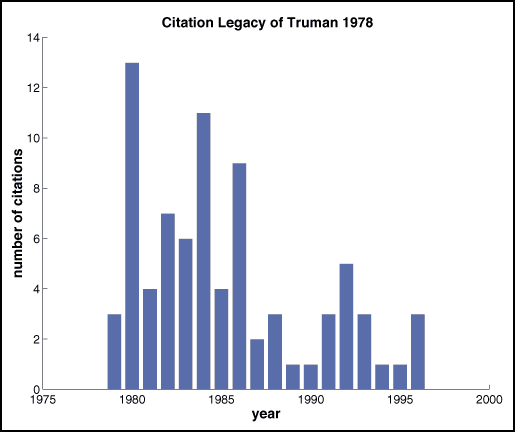CITATION ANALYSIS
Truman JW (1978). Hormonal release of stereotyped motor programmes from the
isolated nervous system of the cecropia silkmoth. J Exp Biol 74:151-173

This paper was the first to provide strong evidence for the role of
eclosion hormone (EH) in triggering pre-eclosion and eclosion behaviors
in pharate animals. In the cecropia silkmoth, isolated CNS preparations
produced motor activity patterns in response to EH which were
consistent with insect molting. Although this paper was cited only
three times in the year after publication, 54 citations were garnered
from 1980 - 1986. The majority of this work has focused not on cecropia
silkmoths, but on the tobacco hornworm (Manduca sexta). Specifically,
EH has been examined with respect to the regulation and timing of its
release, release sites, coordinating pre-ecdysis and ecdysis behaviors,
as well as phosphoprotein regulation of EH. Additionally, it appears
that this work has also impacted a broader audience. This is evidenced
by a few citations from work done in photoreception of butterflies,
neurohemal systems in cockroaches, and circadian clock gating in
swallow tails. However, the significance of this classic paper lies in
another lineage. Specifically, work on EH in Manduca sexta is viewed as
a model for the hormonal release of behavior in animals.
This page prepared by:
Andrew Tate, Oct 96, bargraph generated by M. MacIver



